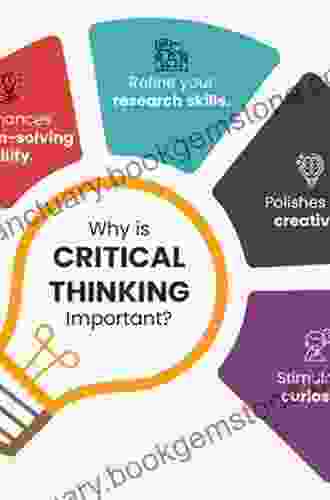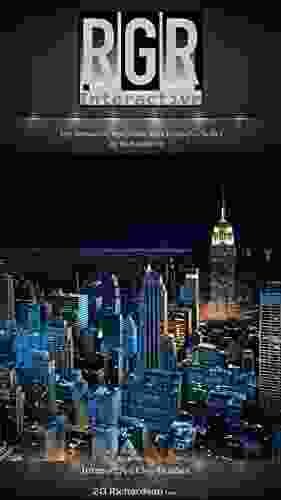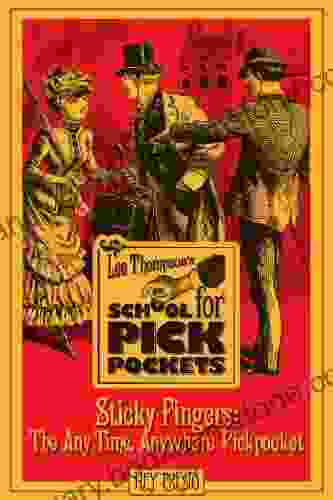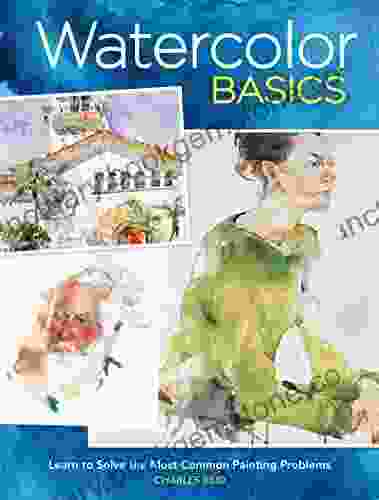The Ways and Workings of Creative Thinkers: Creative Core

Creativity, the lifeblood of innovation and progress, is an elusive yet captivating phenomenon. Its mysterious nature has long intrigued researchers, who have sought to unravel the enigmatic workings of creative thinkers. This article aims to delve into the very essence of creativity, exploring the traits, processes, and environments that nurture the birth of groundbreaking ideas.
Unveiling the Creative Traits
Creative thinkers are often characterized by a unique constellation of traits that distinguish them from their more conventional counterparts. Imagination, the ability to conjure vivid mental images and scenarios, stands as the cornerstone of creative thinking. It allows thinkers to break free from the confines of reality and envision possibilities that defy the ordinary.
5 out of 5
| Language | : | English |
| File size | : | 146350 KB |
| Text-to-Speech | : | Enabled |
| Screen Reader | : | Supported |
| Enhanced typesetting | : | Enabled |
| Print length | : | 353 pages |
Divergent thinking, the capacity to generate multiple novel solutions to a single problem, is another hallmark of creative thinkers. Unlike convergent thinkers, who focus on finding a single "correct" answer, divergent thinkers embrace the exploration of unconventional pathways. This trait empowers them to generate a wide array of ideas from which to select the most promising.
Cognitive flexibility, the ability to switch between different perspectives and approaches, is a crucial aspect of creative thinking. Creative thinkers possess the mental agility to adapt to changing circumstances and consider problems from diverse angles. This flexibility allows them to embrace unconventional solutions and break free from rigid thought patterns.
Open-mindedness, the willingness to embrace new ideas and perspectives, is a fundamental trait among creative thinkers. They are not bound by preconceived notions or societal norms. Instead, they approach the world with a curious and receptive mindset, seeking inspiration from unexpected sources.
Risk-taking and experimentation are integral to the creative process. Creative thinkers are not afraid to venture beyond the boundaries of the known. They embrace experimentation, recognizing that failure is an inherent part of the creative journey. This willingness to take risks allows them to explore uncharted territories and discover novel solutions.
The Creative Process: A Journey of Inspiration
Creativity is not a linear path but rather a complex and multifaceted process involving numerous stages. The initial spark of inspiration often emerges during an incubation period, a time when the mind subconsciously processes information and generates new ideas. It is during this period that seemingly unrelated concepts may converge to form novel insights.
Divergent thinking plays a pivotal role in the early stages of the creative process. Creative thinkers engage in brainstorming sessions, mind mapping, and other techniques to generate a wide range of ideas. They challenge assumptions, question conventions, and explore unconventional perspectives to diverge from the beaten path.
Once a sufficient number of ideas have been generated, convergent thinking comes into play. Creative thinkers evaluate and refine their ideas, selecting the most promising ones for further development. This stage involves critical thinking, logical analysis, and the ability to synthesize disparate elements into a coherent whole.
The creative process is often iterative, involving multiple cycles of refinement and improvement. Creative thinkers may return to the incubation period to seek new inspiration or engage in divergent thinking to generate additional ideas. This iterative approach allows them to refine their concepts and develop them into polished and impactful solutions.
Nurturing Creativity: The Role of Environment
While individual traits play a significant role in creativity, the environment also has a profound impact on its development. A supportive and stimulating environment can foster creativity, while a restrictive and unwelcoming one can stifle it. Here are some key environmental factors that nurture creative thinking:
Collaboration and Community: Creative thinkers often thrive in environments that encourage collaboration and community. Interacting with other creative individuals, sharing ideas, and receiving feedback can spark new insights and broaden perspectives.
Autonomy and Freedom: Creative thinkers require autonomy and freedom to explore their ideas without excessive constraints or micromanagement. Environments that encourage experimentation and risk-taking are more likely to foster creativity.
Inspiration and Exposure: Creative thinkers need exposure to diverse sources of inspiration, such as art, music, literature, and nature. Exposure to different cultures, perspectives, and experiences can broaden their horizons and spark new ideas.
Resources and Support: Access to resources such as libraries, studios, and technology can provide creative thinkers with the tools they need to develop their ideas and bring them to fruition.
Recognition and Appreciation: Recognition and appreciation for creative endeavors can motivate creative thinkers to continue exploring their ideas and sharing them with the world.
Unleashing Your Creative Potential
Creativity is not solely reserved for a select few but rather a potential that lies within all of us. By understanding the traits, processes, and environments that cultivate creativity, we can unlock our own hidden potential and become more innovative in our thinking and actions.
Here are some practical tips to boost your creativity:
Embrace Imagination: Engage in activities that stimulate your imagination, such as storytelling, visualization, and artistic expression. Let your mind wander and allow your creativity to flow freely.
Practice Divergent Thinking: Challenge yourself to generate a wide range of ideas for any given problem. Use techniques like brainstorming, mind mapping, and freewriting to explore unconventional solutions.
Develop Cognitive Flexibility: Train your mind to consider problems from multiple perspectives. Seek different viewpoints and try to understand the underlying assumptions and biases that may limit your thinking.
Cultivate Open-mindedness: Be receptive to new ideas, even if they seem unconventional. Listen attentively to different perspectives and be willing to challenge your own assumptions.
Embrace Risk-taking: Step outside of your comfort zone and experiment with new approaches. Recognize that failure is an inherent part of the creative process and view it as an opportunity for learning and growth.
Creative thinkers are not merely born with exceptional abilities but rather individuals who have honed their skills through a combination of natural traits, deliberate practice, and supportive environments. By understanding the intricate workings of the creative core, we can foster creativity in ourselves and others, unlocking the potential for transformative ideas that shape our world.
Remember, creativity is not a destination but an ongoing journey. By embracing imagination, divergent thinking, cognitive flexibility, open-mindedness, and risk-taking, we can cultivate a mindset that empowers us to think creatively and contribute to the tapestry of human innovation.
5 out of 5
| Language | : | English |
| File size | : | 146350 KB |
| Text-to-Speech | : | Enabled |
| Screen Reader | : | Supported |
| Enhanced typesetting | : | Enabled |
| Print length | : | 353 pages |
Do you want to contribute by writing guest posts on this blog?
Please contact us and send us a resume of previous articles that you have written.
 Best Book
Best Book Page Flip
Page Flip Bookshelf
Bookshelf Literary loom
Literary loom Chapter
Chapter Bookish
Bookish PageTurner
PageTurner Bibliophile
Bibliophile Story
Story Inkwell
Inkwell Bookworm
Bookworm Labyrinth
Labyrinth Plot Twist
Plot Twist Prose
Prose Paperback
Paperback Storyteller
Storyteller Sanctuary
Sanctuary Fiction
Fiction Reading
Reading Chronicle
Chronicle Read
Read J B Rosenberg
J B Rosenberg Anita Nipane
Anita Nipane Gary Spetz
Gary Spetz Anna Stephens
Anna Stephens Camil Flores
Camil Flores Quincy Jones
Quincy Jones Angelo Colorni
Angelo Colorni Kien Nguyen
Kien Nguyen David Hampshire
David Hampshire Michael Howard
Michael Howard Denny S Bryce
Denny S Bryce Ryan White
Ryan White Catherine Berry
Catherine Berry Jack Porter
Jack Porter Anna Goldenberg
Anna Goldenberg Shellise Berry
Shellise Berry Christopher Greyson
Christopher Greyson Pao Lor
Pao Lor Regine Abel
Regine Abel G J Younghusband
G J Younghusband Andrew Porwancher
Andrew Porwancher Kevin Grange
Kevin Grange E M Foner
E M Foner Frank Kennedy
Frank Kennedy Patrick Smithwick
Patrick Smithwick Cissy Houston
Cissy Houston Haley Hoover
Haley Hoover Fred Botting
Fred Botting Cion Lee
Cion Lee Anne C Heller
Anne C Heller Manuel Huitzilli
Manuel Huitzilli Ann Beaglehole
Ann Beaglehole Angie Daniels
Angie Daniels Paul Reps
Paul Reps Andrew Osmond
Andrew Osmond Kitty Gorrell
Kitty Gorrell Bernie Marcus
Bernie Marcus Condoleezza Rice
Condoleezza Rice Ben G Frank
Ben G Frank D C Palter
D C Palter Zachary Lamothe
Zachary Lamothe Kimberly Brock
Kimberly Brock Katrina Mcpherson
Katrina Mcpherson Marie Force
Marie Force Jane Hamilton
Jane Hamilton Andrew Meier
Andrew Meier Kianna Alexander
Kianna Alexander Andy Mckell
Andy Mckell Annie Dillard
Annie Dillard Ann Marks
Ann Marks Billy Ray Belcourt
Billy Ray Belcourt Steven Bleicher
Steven Bleicher Caroline Linscott
Caroline Linscott Ernest Hemingway
Ernest Hemingway Robert Alan Brookey
Robert Alan Brookey Andrew Mayne
Andrew Mayne Elisa Russell
Elisa Russell Andrew Cunningham
Andrew Cunningham Nintendo
Nintendo Joseph E Persico
Joseph E Persico Andy Herbach
Andy Herbach Angelina Jolie
Angelina Jolie Andrew Bowden
Andrew Bowden Anna Bartlett
Anna Bartlett Andy Southall
Andy Southall Ann Aguirre
Ann Aguirre Nancy Princenthal
Nancy Princenthal Jeffrey Chipps Smith
Jeffrey Chipps Smith Andrew Hund
Andrew Hund Andrew M Dobell
Andrew M Dobell Andrei Besedin
Andrei Besedin Dina Nayeri
Dina Nayeri Anette Fischer
Anette Fischer Dorothy Hartley
Dorothy Hartley Jake Sherman
Jake Sherman Andrea Jackson
Andrea Jackson Mark Henwick
Mark Henwick Mari K Eder
Mari K Eder Emily Louise Howard
Emily Louise Howard Howard Thurston
Howard Thurston Jessica Alba
Jessica Alba Guy Stern
Guy Stern Tony Wheeler
Tony Wheeler Tina Brown
Tina Brown Andrew Dickos
Andrew Dickos Phoenix Collins
Phoenix Collins Michael Punke
Michael Punke Angela Hunt
Angela Hunt Nicholas Roerich
Nicholas Roerich Jane Dunnewold
Jane Dunnewold John Sugden
John Sugden Ann Budd
Ann Budd C L Parker
C L Parker Ruskin Bond
Ruskin Bond Godfrey Baldacchino
Godfrey Baldacchino Kent Wong
Kent Wong Christie Taylor
Christie Taylor Hilary Spurling
Hilary Spurling Dawnie Walton
Dawnie Walton Anna Todd
Anna Todd Anna Sherman
Anna Sherman Anna Mocikat
Anna Mocikat Anne Bogart
Anne Bogart Nicholas Meyer
Nicholas Meyer Glenn Adamson
Glenn Adamson Ronnie Smith
Ronnie Smith Harriet Welty Rochefort
Harriet Welty Rochefort Eric Seale
Eric Seale Crystal Daniels
Crystal Daniels Tim Slessor
Tim Slessor Jason Sommer
Jason Sommer Angus Donald
Angus Donald Ani Trime
Ani Trime Anna Salton Eisen
Anna Salton Eisen Andrew Parker
Andrew Parker Anjan Chatterjee
Anjan Chatterjee Roman Frister
Roman Frister John Driver
John Driver Luis Carlos Montalvan
Luis Carlos Montalvan Yossi Maimon
Yossi Maimon Michael Asher
Michael Asher Robin Sloan
Robin Sloan Edward Bellamy
Edward Bellamy Andy Warhol
Andy Warhol Andrea Fazzari
Andrea Fazzari Taylor Michaels
Taylor Michaels James Canton
James Canton Cornel West
Cornel West Angus M Gunn
Angus M Gunn Milton Glaser
Milton Glaser Lyonel Feininger
Lyonel Feininger Frederick Stirton Weaver
Frederick Stirton Weaver Kindle Edition
Kindle Edition Marina Benjamin
Marina Benjamin Christine Leteux
Christine Leteux Terry Newman
Terry Newman Paul Robert Walker
Paul Robert Walker Andrew Mcmahon
Andrew Mcmahon Andrew Juniper
Andrew Juniper Anjelah Johnson Reyes
Anjelah Johnson Reyes Charlie English
Charlie English Ys Publishing
Ys Publishing Edward Seidensticker
Edward Seidensticker Annabel Chase
Annabel Chase Patricia Preciado Martin
Patricia Preciado Martin Charla Krupp
Charla Krupp Fred Saberhagen
Fred Saberhagen Ray Scippa
Ray Scippa Anna Badkhen
Anna Badkhen Ed Duncan
Ed Duncan Danielle Geller
Danielle Geller Michelle Lee
Michelle Lee Andy Davidson
Andy Davidson Anna Kirtlan
Anna Kirtlan E B Sledge
E B Sledge Disamis Arcia Munoz
Disamis Arcia Munoz Bridget Alsdorf
Bridget Alsdorf Graeme Davis
Graeme Davis Val Wake
Val Wake Xander Black
Xander Black Christopher S Wood
Christopher S Wood W H Bartlett
W H Bartlett Angela Gaughan
Angela Gaughan Dita Von Teese
Dita Von Teese Andrew Darby
Andrew Darby Sara Funduk
Sara Funduk Sarah Ferguson
Sarah Ferguson Jason Kramar
Jason Kramar Robin Koontz
Robin Koontz Andrea Pflaumer
Andrea Pflaumer Julie Ann Walker
Julie Ann Walker Fawzia Koofi
Fawzia Koofi Angela D French
Angela D French Shannon Leone Fowler
Shannon Leone Fowler Carlos Del Amor
Carlos Del Amor Jenny Schwartz
Jenny Schwartz Angel Williams
Angel Williams Elizabeth L Block
Elizabeth L Block Stuart Campbell
Stuart Campbell Anna Malaika Tubbs
Anna Malaika Tubbs Andrew Vietze
Andrew Vietze Gavin Ambrose
Gavin Ambrose J D Robb
J D Robb Anna Qu
Anna Qu Bathroom Readers Institute
Bathroom Readers Institute Drew Kwong
Drew Kwong Elaine Welteroth
Elaine Welteroth Emiko Davies
Emiko Davies Danielle Prescod
Danielle Prescod Sam Fury
Sam Fury Anne Billson
Anne Billson Ann Cleeves
Ann Cleeves Van Lu
Van Lu T J Demos
T J Demos Andy Keen
Andy Keen Maggie O Farrell
Maggie O Farrell Erin Lewis Fitzgerald
Erin Lewis Fitzgerald William W Johnstone
William W Johnstone Fern Michaels
Fern Michaels Andy Mcdermott
Andy Mcdermott Raymond F Jones
Raymond F Jones Brian Shea
Brian Shea Rhonda Mcknight
Rhonda Mcknight Jocelyn Harewood
Jocelyn Harewood Heather Galler
Heather Galler Andreas Marks
Andreas Marks Lynda Vaughn
Lynda Vaughn R G Richardson
R G Richardson Joshua Rivkin
Joshua Rivkin Annabelle Honess Roe
Annabelle Honess Roe David Mamet
David Mamet Monica Moody
Monica Moody Nicole Grotepas
Nicole Grotepas Louise Egerton
Louise Egerton Lonneke Geerlings
Lonneke Geerlings Leslie Redhead
Leslie Redhead Dave Clayton
Dave Clayton Chris Weyers
Chris Weyers Waldemar Bogoras
Waldemar Bogoras Bill Fawcett
Bill Fawcett Holly Moss
Holly Moss Andrew Dewar
Andrew Dewar Ann Hoffman
Ann Hoffman J N Chaney
J N Chaney Jean Ann Shirey
Jean Ann Shirey Rita Moreno
Rita Moreno Don Bluth
Don Bluth John Patrick Bray
John Patrick Bray Charles Reid
Charles Reid Lakisha Johnson
Lakisha Johnson Erwin Panofsky
Erwin Panofsky Christina Klein
Christina Klein Larry Silverberg
Larry Silverberg Annalee Newitz
Annalee Newitz Christopher Fowler
Christopher Fowler Anna Pasternak
Anna Pasternak Andrew Graham Dixon
Andrew Graham Dixon Carole Jackson
Carole Jackson Angharad Lewis
Angharad Lewis Caroline James
Caroline James Kristina Liu
Kristina Liu James T Deshields
James T Deshields Flavio Ferrari Zumbini
Flavio Ferrari Zumbini Jeremy Mercer
Jeremy Mercer Mia Sheridan
Mia Sheridan Farha Ghannam
Farha Ghannam George Kalmpourtzis
George Kalmpourtzis Hamish Bowles
Hamish Bowles Ted Kerasote
Ted Kerasote Andrew Johnson
Andrew Johnson Stephen Kurkjian
Stephen Kurkjian Anika Fajardo
Anika Fajardo Barbara Sillery
Barbara Sillery L T Ryan
L T Ryan Erika Warmbrunn
Erika Warmbrunn Octave Uzanne
Octave Uzanne Jonathan Rauch
Jonathan Rauch Andrew Bostock
Andrew Bostock Shawn Kelly
Shawn Kelly Andreas Deja
Andreas Deja Andrew Sutton
Andrew Sutton Andrew Marble
Andrew Marble Angus Johnstone
Angus Johnstone L J Martin
L J Martin Andrew Haslam
Andrew Haslam Michael Tubbs
Michael Tubbs Sylvia Day
Sylvia Day Kate Frost
Kate Frost Lance Esplund
Lance Esplund Andrew Carroll
Andrew Carroll Andrea Pomerantz Lustig
Andrea Pomerantz Lustig Barbara Lasalle
Barbara Lasalle Marc Shapiro
Marc Shapiro Angelico Chavez
Angelico Chavez Ernesto Che Guevara
Ernesto Che Guevara Anita Heiss
Anita Heiss Natasha Solomons
Natasha Solomons Susan Ross
Susan Ross B Love
B Love Anna Hackett
Anna Hackett Gabrielle Moss
Gabrielle Moss Angus Roxburgh
Angus Roxburgh Dominic Roskrow
Dominic Roskrow John Gilstrap
John Gilstrap Jack Gernsheimer
Jack Gernsheimer Mark Horrell
Mark Horrell Michiyo
Michiyo Andrew Forkner
Andrew Forkner David J Dennis Jr
David J Dennis Jr Scott Thybony
Scott Thybony Anna Jean Mayhew
Anna Jean Mayhew Andrew Grant
Andrew Grant Zane Lamprey
Zane Lamprey Lisa Dickey
Lisa Dickey Jack Lucas
Jack Lucas Angie Grace
Angie Grace Anna Paola Sanna
Anna Paola Sanna Doris Kennedy
Doris Kennedy Scott Bartlett
Scott Bartlett Daniella Weiss Ashkenazy
Daniella Weiss Ashkenazy James Martin
James Martin Robert Ludlum
Robert Ludlum Dominique Auzias
Dominique Auzias John M Olsen
John M Olsen Sherry Ginn
Sherry Ginn Henry Van Dyke
Henry Van Dyke Jill Braden
Jill Braden Bruce Feiler
Bruce Feiler Kathryn Wilder
Kathryn Wilder Rob Craig
Rob Craig Ann Blockley
Ann Blockley Anita Brookner
Anita Brookner Melissa Riddell
Melissa Riddell Charles Bukowski
Charles Bukowski Nina Willner
Nina Willner Mike Epps
Mike Epps Laurinda Reddig
Laurinda Reddig Liz Neves
Liz Neves Andrew Wilson
Andrew Wilson Andrei Codrescu
Andrei Codrescu Walter Foster
Walter Foster Kindle Edition With Audio Video
Kindle Edition With Audio Video Kat Chow
Kat Chow Juanitta Baldwin
Juanitta Baldwin Liao Yiwu
Liao Yiwu David Loud
David Loud Octavio Solis
Octavio Solis David Nees
David Nees Andy Mcnab
Andy Mcnab Jamila Jasper
Jamila Jasper John Charles Bennett
John Charles Bennett John C Cranham Dds
John C Cranham Dds Theodore Annemann
Theodore Annemann Anna Cavallo
Anna Cavallo Gary Faigin
Gary Faigin D C Robinson
D C Robinson Terry Brooks
Terry Brooks Mary Robinette Kowal
Mary Robinette Kowal Frederic Lombardi
Frederic Lombardi Stephanie Laurens
Stephanie Laurens Harry Houdini
Harry Houdini Andrew Tunstall
Andrew Tunstall David Blatner
David Blatner Anna Corba
Anna Corba John F Mullins
John F Mullins Sergio Bizzio
Sergio Bizzio Andrew Delaplaine
Andrew Delaplaine J C Cooper
J C Cooper Kliph Nesteroff
Kliph Nesteroff Andrew Karevik
Andrew Karevik Tiffany L Warren
Tiffany L Warren Jane Akshar
Jane Akshar Jarrett Brandon Early
Jarrett Brandon Early J Bright
J Bright Tetiana Elert
Tetiana Elert Angela Wolf
Angela Wolf Judy Omar
Judy Omar Laura Bradbury
Laura Bradbury Angie Martinez
Angie Martinez C Y Croc
C Y Croc Ann C Smith
Ann C Smith Scott Baron
Scott Baron Angela Marie Moulton
Angela Marie Moulton Anna M Mazur
Anna M Mazur Duncan Heath
Duncan Heath Tom Sileo
Tom Sileo William J Lederer
William J Lederer Royal Horticultural Society
Royal Horticultural Society Clemantine Wamariya
Clemantine Wamariya Maxim Peter Griffin
Maxim Peter Griffin Andrew Vaillencourt
Andrew Vaillencourt Darrin Duford
Darrin Duford Angelique V Nixon
Angelique V Nixon Stacey L Nash
Stacey L Nash Andrew Moor
Andrew Moor Royd Tolkien
Royd Tolkien Emma Newman
Emma Newman Anne Pannecke
Anne Pannecke Isabel Allende
Isabel Allende Martin Cruz Smith
Martin Cruz Smith Laura Lee
Laura Lee Marilyn Chase
Marilyn Chase Anna Starmer
Anna Starmer Jeff Fletcher
Jeff Fletcher Wendy Jelbert
Wendy Jelbert Michele Sullivan
Michele Sullivan Alex Tannen
Alex Tannen Shel Perkins
Shel Perkins Anna Koliadych
Anna Koliadych Josh Hanagarne
Josh Hanagarne Magic Guidebooks
Magic Guidebooks Yan Lianke
Yan Lianke Andrea Lee
Andrea Lee Margaret Wander Bonanno
Margaret Wander Bonanno Rachel Rubin Wolf
Rachel Rubin Wolf Anjali Enjeti
Anjali Enjeti Emily Bingham
Emily Bingham Simon Schama
Simon Schama Denys Johnson Davies
Denys Johnson Davies Andrew Moriarty
Andrew Moriarty Jeb Rosebrook
Jeb Rosebrook Andrea Erickson
Andrea Erickson Donald Preziosi
Donald Preziosi Sylvan Barnet
Sylvan Barnet Betty Arnett
Betty Arnett Kristina Kozak
Kristina Kozak Julie Klassen
Julie Klassen Anna Deavere Smith
Anna Deavere Smith Kent Babb
Kent Babb Legacy Russell
Legacy Russell Angie Cruz
Angie Cruz Diana Gabaldon
Diana Gabaldon Ann C Hall
Ann C Hall Anna Nadler
Anna Nadler Diane Esguerra
Diane Esguerra Rickie Lee Jones
Rickie Lee Jones Siren
Siren Shirley Anstis
Shirley Anstis Josie Iselin
Josie Iselin Sarah Herman
Sarah Herman Padma Lakshmi
Padma Lakshmi
Light bulbAdvertise smarter! Our strategic ad space ensures maximum exposure. Reserve your spot today!

 Gabriel Garcia MarquezThe Harman Family: From Yorkshire to Fiji - A Journey of Resilience and...
Gabriel Garcia MarquezThe Harman Family: From Yorkshire to Fiji - A Journey of Resilience and... Deacon BellFollow ·11.5k
Deacon BellFollow ·11.5k Damon HayesFollow ·13.1k
Damon HayesFollow ·13.1k Donovan CarterFollow ·17.8k
Donovan CarterFollow ·17.8k Carlos FuentesFollow ·8.8k
Carlos FuentesFollow ·8.8k Leo TolstoyFollow ·18k
Leo TolstoyFollow ·18k D'Angelo CarterFollow ·14.5k
D'Angelo CarterFollow ·14.5k Shaun NelsonFollow ·14.7k
Shaun NelsonFollow ·14.7k Oliver FosterFollow ·5.4k
Oliver FosterFollow ·5.4k
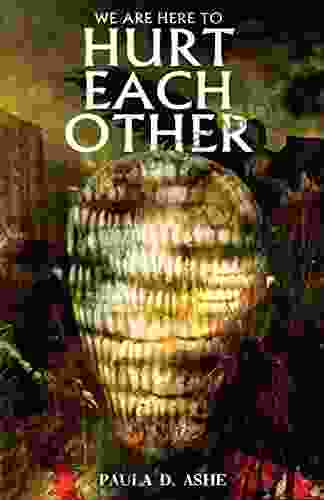
 Ethan Mitchell
Ethan MitchellWe Are Here To Hurt Each Other: A Deep Dive into the...
Yes, I can help you with that. Here is an...

 Xavier Bell
Xavier BellHannah Arendt: A Life in Dark Times
Hannah Arendt was a...
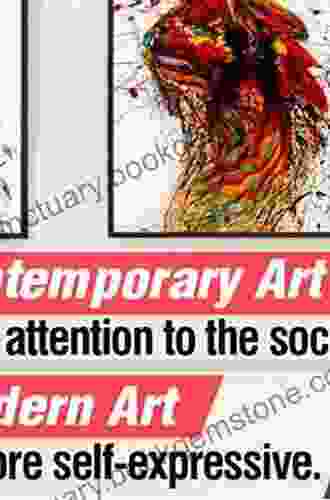
 Donovan Carter
Donovan CarterThe Art of Looking: A Comprehensive Exploration of Visual...
: The Power of...

 Terence Nelson
Terence NelsonUnveiling the Secrets of Moscow's Red Square: A Journey...
In the heart of Moscow,...
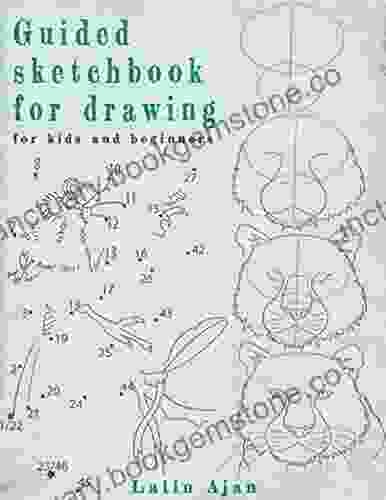
 Cruz Simmons
Cruz SimmonsDrawing Workbook for Kids and Beginners: An Enchanting...
: Unveiling the Magic of Drawing Drawing, an...
5 out of 5
| Language | : | English |
| File size | : | 146350 KB |
| Text-to-Speech | : | Enabled |
| Screen Reader | : | Supported |
| Enhanced typesetting | : | Enabled |
| Print length | : | 353 pages |


